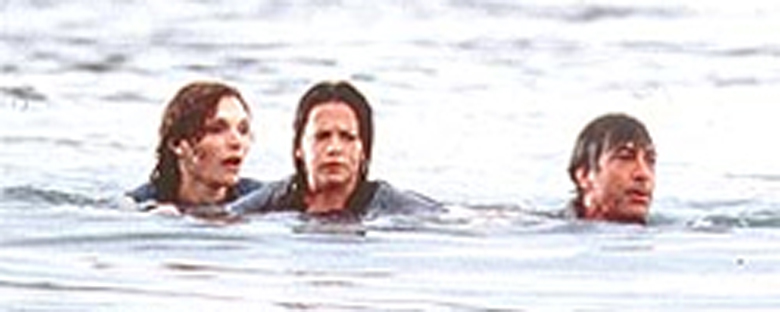Reviews
John Sayles
USA, 1999
Credits
Review by Leo Goldsmith
Posted on 30 September 2004
Source Columbia Tristar DVD
Related articles
features: John Sayles: American Independent
With the probable exception of The Secret of Roan Inish, Limbo is John Sayles’ most lyrical film and one of his most artful and emphatic marriages of the personal and the political. Like so much of his work, Limbo feels like two films — one agitprop, the other melodrama — but these two strains are unified in the film’s title and (as always) setting. A small city in Alaska (and its uncivilized environs) becomes the literal and figurative limbo of the film’s title. With a stagnant economy, the city’s inhabitants find themselves caught between a rich history and an uncertain future.
“History is our future here,” says a wealthy tourism magnate whose dream is to turn Alaska into “one big theme park.” The industry of history is the only chance for economic growth in this town, as the fish cannery and the pulp mill close down, and elderly people from New Jersey take to cruise ships to get a glimpse of the “authentic Alaskan experience.” In one of his most daringly complex montages, Sayles juxtaposes a tour guide’s shtick with the recycled myths and legends of the townspeople as they sit around a bar.
Personal and local history blend into a constant, morbid reiteration of the past, and this is as true for the town as a whole as it is for the film’s wounded central characters. Joe Gastineaux is a former fisherman, former pulp mill worker, haunted by a freak accident from his youth that claimed the lives of two friends; Donna D’Angelo is an able, but essentially mediocre singer who is running from town to town, boyfriend to boyfriend, in desperate pursuit of a future for herself and her teenage daughter, Noelle. Each character is in an emotional stasis analogous to the economic situation of the region.
However, in what is perhaps Sayles’ most bold narrative experiment, the film shifts at its midpoint to an altogether different type of film. Thanks to Joe’s shifty half-brother, Joe, Donna and Noelle find themselves stranded on a remote island, hiding out from killers and trying to survive in the wilderness. Despite the general implausibility of their situation, the plot mechanics remain mostly credible, and furthermore provide the pretext for a deeper exploration of the characters’ state of limbo.
In their desperate hope for endurance, the character’s cling to one another for physical and emotional support. But whereas it is Joe’s knowledge of living in the wild that helps them to survive, it is Noelle (played with astonishing depth and nuance by Vanessa Martinez) who demonstrates the strength and creativity to overcome their emotional difficulty. In the ruins of a long-abandoned cabin in the woods, Noelle discovers the diary of a girl her age, and it is her reading and, more importantly, her revision and continuation of this narrative that enables the characters to endure their situation. As the film draws to a tantalizing and ambiguous close, it is this capacity for narrative revision that becomes necessary both for Sayles characters and his audience.
We don’t do comments anymore, but you may contact us here or find us on Twitter or Facebook.



